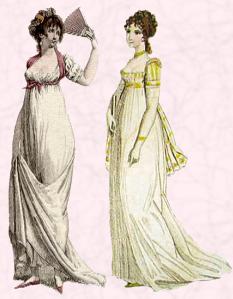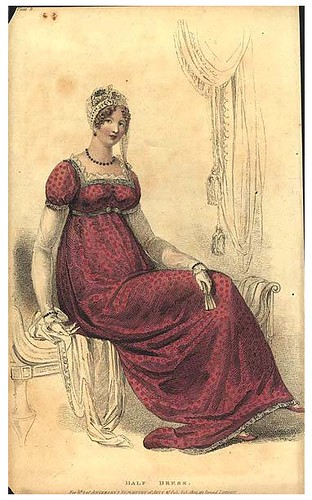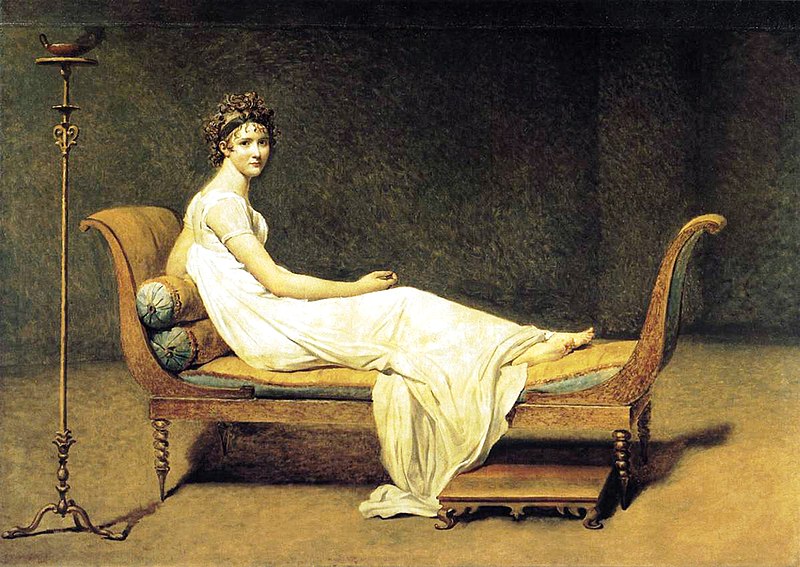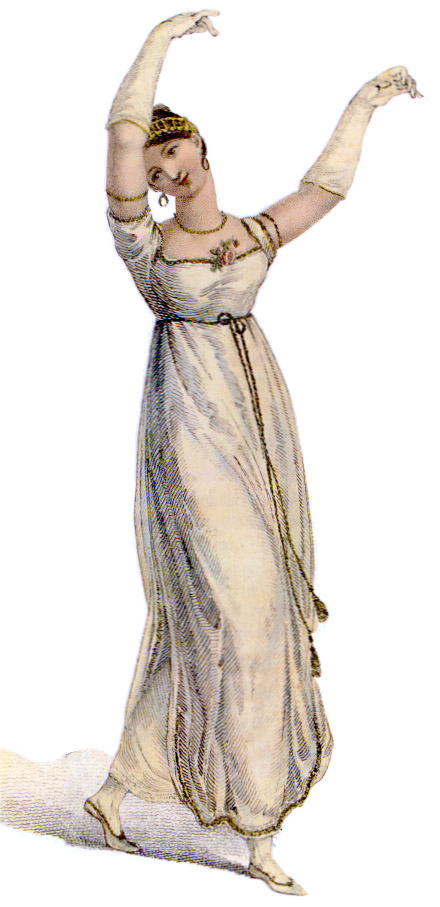The year 1800 saw the turn of a new century, along with the aftermath of the radical changes that took place during the 1790's. In 1799, Napoleon Bonaparte staged a coup d'etat and established himself as the head of government in war-torn France. Pope Pius VI died as a near-hostage to the French, leaving the papal tiara in their possession. Because of this, Pope Pius VII was crowned in Venice in 1800 with a papier-mache model of the original tiara in a crowning moment of sartorial grandeur. In Britain, Prime Minister William Pitt the Younger and Parliament passed the Union With Ireland Act of 1800, uniting Great Britain with Ireland. In the United States, Thomas Jefferson and John Adams ran in a bitter, heated campaign filled with slander and ad hominem attacks on both sides.
In the 1800's, the changes that took place in the 1790's began to slowly evolve into something new, something subtly different. The fashion of the era reflects this.
Though the empire waistlines remained popular, a few things subtly changed over the course of the 1800's. As the decade wore on, brighter, bolder colors came more into fashion, as well as jewelry and other ornamentation.
Longer sleeves came into fashion, which for evening wear meant sheer, white sleeves attached to the more colorful, short-sleeved gowns. And yes, fellow 1995 Pride and Prejudice fans who can quote the Mrs. Bennet line about Aunt Gardiner bringing the fashion of long sleeves to Hertfordshire, I'm talking to you.
A trend that started in the 1790's and continued into the early part of the 1800's was modeling one's hair and wardrobe after ancient Greek and Roman statues (
Here's a great article about neoclassic hairstyles and accessories).
The Gothic romance and neoclassicism of the 1790's faded as the 1800's went on. Brighter colors, silks, and jewelry came back into fashion. Earrings seemed to resurface near the middle of the decade. Coral necklaces were a popular accessory of the time (another great JaneAustensWorld article on those
here) and stayed in fashion for several years.
 |
| A portrait of a woman wearing what looks like a late-decade morning dress. Featuring a coral necklace, earrings, and a gold headband of some sort, as well as some colorful shawls and long sleeves. She looks like she's holding colored gloves. Source. |
One last scrap of neoclassic style was found in the tightly coiled coiffures of ladies of the highest fashion- but this time it was more Roman-inspired, with tight, controlled curls rather than the loose, romantic styles of the Greeks.
As the Regency Era continues (or rather, officially starts in 1811), we'll begin to see what I'd call (from my rather surface-y research into next week) "The Age of the Accessory." After 1810, jewelry and hair accessories continue to rise in popularity and trims become more elaborate as we venture into the 19th century and leave every memory of the 1700s well and truly behind. At least where fashion is concerned.








No comments:
Post a Comment
,mmmmmmmmmmmmmmmmmmmmmmmmmmmmmmmmmmmmmmmmmmmmmmmmmmmmmmmmmmmmmmmmmmmmmmmmmmmmmmmmmmmmmmmmmmmmmmmmmmmmmmmmmmmmmmmmmmmmmmmm'aaaaaaaaaaaakAAAQA
I was going to type something clever, but my cat provided this triumph of literature. Thank you for commenting! Just keep it clean, on-topic, and respectful.